What is Tennis Elbow? (Causes, Symptoms, and Treatments)
May 9th, 2016 | 5 min. read
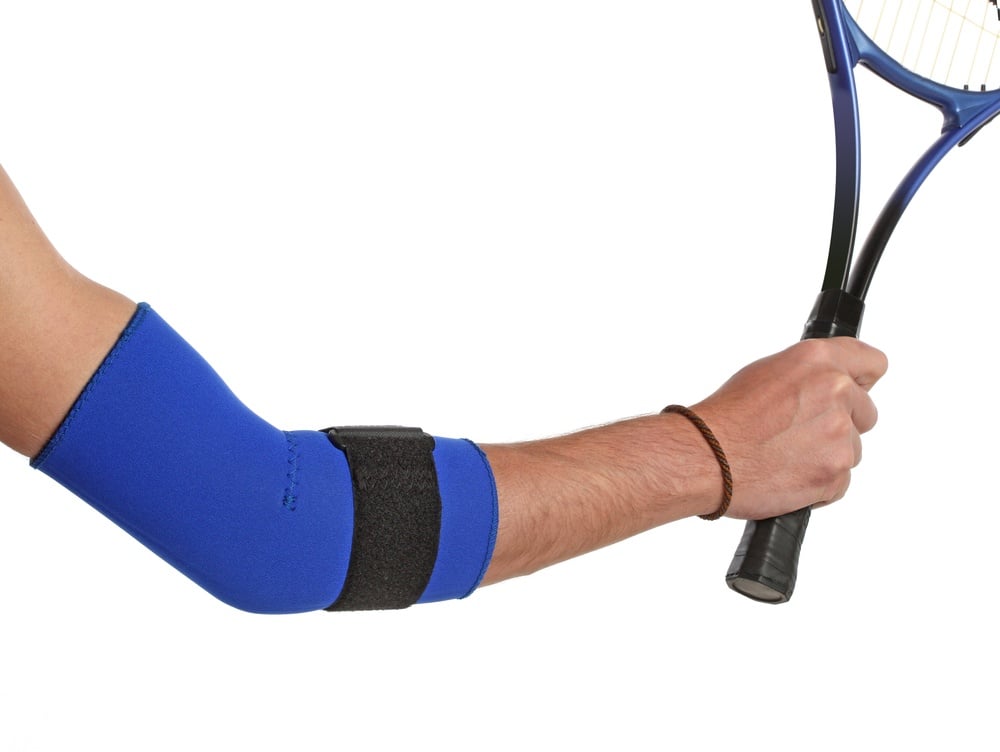
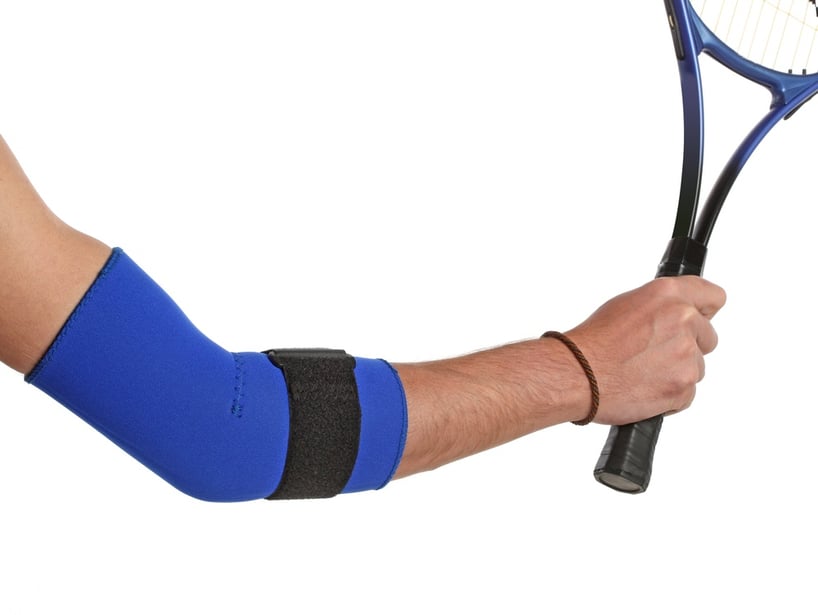
Tennis elbow (medical term: lateral epicondylitis) is an overuse injury affecting the tendons in the outside of the elbow joint. It usually presents with weak grip strength and a painful soreness or burning sensation in the outside of the elbow. Tennis elbow can be a sports injury, but its causes vary — and some may surprise you.
Tennis elbow is a type of tendinitis (sometimes spelled "tendonitis") of the elbow, affecting the muscles and tendons that control the use of the forearm — specifically, the extension of the wrist and fingers.
Any repetitive motion that extends the wrist and fingers can cause tiny tears and inflammation in the muscles and tendons of the forearm. This, in turn, causes elbow pain and weakness when gripping objects.
Causes of Tennis Elbow
Lateral epicondylitis is caused by damage to a forearm muscle called the extensor carpi radialis brevis (ECRB). This muscle is responsible for stabilizing your wrist when your arm is extended (in a straight position).
Sometimes, the ECRB can become weakened or strained from frequent bending and straightening of the elbow. This overuse may result in tiny tears in the tendons that attach the ECRB muscle to bone. These tears are the cause of the inflammation and pain we call tennis elbow.
What kinds of activities cause tennis elbow?
As implied by its name, tennis elbow is frequently seen in tennis players — particularly in athletes who are using a poor stroke technique or a loosely-strung racket.
However, anyone can develop the condition. Repetitive motion is the chief cause; any activity that relies on the heavy use of your forearm muscles can lead to injury.
Tennis elbow is also more common if you're between the ages of 30 and 50.
Activities that can cause tennis elbow include:
- knitting
- mousing (using a computer mouse)
- playing musical instruments like the guitar
- sports: for example, golf, racquetball, squash, swimming, or tennis
- typing
- yard work like raking
- weightlifting
People who work in certain occupations that involve frequent lifting, gripping, or repetitive arm movements are also prone to developing tennis elbow.
Occupations where tennis elbow is common include:
- auto worker
- butcher
- carpenter
- cook/chef
- office worker
- painter
- plumber
symptoms of tennis elbow
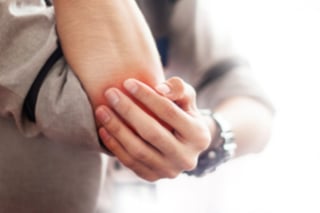
Tennis elbow often begins with mild symptoms and develops gradually until the pain disrupts normal activities. Symptoms mainly affect the outside of the elbow. Signs of tennis elbow include:
- burning sensation
- difficulty gripping or lifting objects
- difficulty making a fist or shaking hands
- difficulty straightening your wrist or waving
- pain (that may radiate to the forearm or upper arm)
- soreness
- tenderness
Diagnosing tennis elbow
If you think you may have tennis elbow, a visit to a doctor is advisable. During your exam, your doctor will ask you questions about your symptoms; for example:
- What are your symptoms, and where on your elbow are they located?
- How long have you been experiencing these symptoms?
- Have you experienced an elbow injury recently?
- Do you have a history of arthritis or other diseases?
- What sports or activities have you been practicing?
- Is your occupation contributing to your pain?
Your doctor may then ask you to perform a tennis elbow test: straightening your wrist and fingers against resistance while your arm is fully straight. If this test causes you pain, you may have muscle damage in the forearm.
Other tests that may be necessary to diagnose your condition can include:
- Electromyography (EMG), to rule out nerve compression.
- Magnetic resonance imaging (MRI) scan, to rule out a herniated disc or arthritis in the neck, which can affect pain sensation in your arms.
- X-rays, to rule out arthritis.
treatment of TENNIS ELBOW (non-surgical)
The majority of people are able to treat their tennis elbow non-surgically. If you have tried the following approaches and they haven't worked for you, surgery may offer relief (skip ahead to the end of this article for more information).
Non-Surgical Treatments You Can Do at Home
- Rest. This is the most important step, and the first you should try. If possible, refrain from activities that strain your elbow for two to three weeks.
- Reduce inflammation. Ice your elbow and take NSAIDs (naproxen or ibuprofen) to help reduce inflammation and pain.
- Brace your arm. A counterforce forearm brace may help immobilize your muscles and tendons while you rest them. Wraps, splints, kinesio (kt) tape, or compression sleeves may also help, though you should see a doctor or physical therapist for instructions on how to use these properly.
- Adjust your equipment. If you sustained your injury at work, improve your ergonomics by changing your tools, your computer mouse, or how you sit and stand. If you injured your elbow playing sports, check your sports equipment to make sure it's properly fit and in good condition, so your forearms don't need to overcompensate (a loosely strung tennis racket, for example, may increase the stress to your arm).
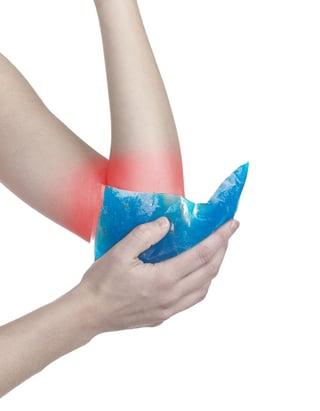
Medical Treatments (Non-surgical)
- Cortisone shot. A doctor can inject a steroid like cortisone directly into your damaged muscle. This may help to decrease inflammation in the elbow.
- Extracorporeal shock wave therapy. Using a probe attached to your skin, your doctor can direct high-energy acoustic waves to your elbow. These waves apply pressure to your muscles and tendons, which may increase blood flow and speed healing. This treatment is considered experimental by some doctor and insurers.
- Physical therapy/rehab/sports medicine. Exercises designed to strengthen and stretch your forearms may help reduce your pain and improve range of motion. Your physical therapist or sports medicine professional may also use techniques like icing, ultrasound, massage, or muscle-stimulating techniques.
- Platelet-Rich-Plasma (PRP).The platelets in your blood contain proteins called growth factors that work to help heal the body. Your orthopedist can prepare, from your own drawn blood, a preparation of plasma that contains an increased and concentrated dose of platelets. This plasma can be injected into your elbow to help speed your recovery. This is a relatively new treatment — well-known to professional athletes — that has proven to work well with chronic elbow injuries. Ask your orthopedist's office if PRP is included in their available procedures.
Tennis elbow surgery
If you're suffering from severe or chronic tennis elbow and none of the above treatments have worked to ease your symptoms within 6 to 12 months, you may be advised by your doctor to consider tennis elbow surgery. Tennis elbow surgery is a highly successful procedure that resolves symptoms in 80% to 90% of patients.
Most of the time, surgery requires removing diseased parts of your muscle and reattaching the healthy muscle back to the bone. Orthopedists can perform either open surgery on the elbow or arthroscopy, which is less invasive.
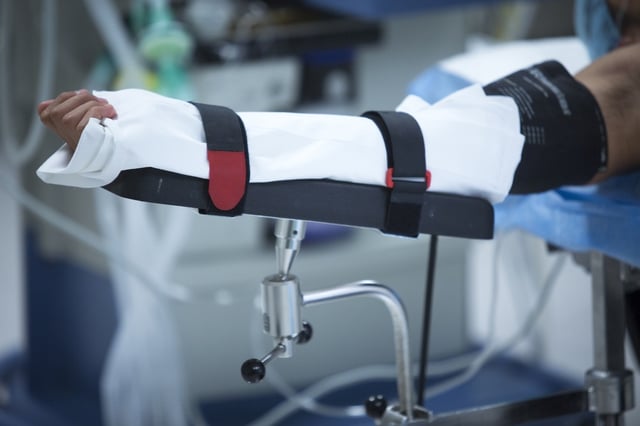
Open elbow surgery
Your doctor will make an incision over the elbow. Diseased muscle is then removed; healthy muscle is reattached to bone; and the incision is sutured closed.
Open surgery is the most commonly performed tennis elbow repair surgery, and can usually be done on an outpatient basis at a surgical center. You will most likely be in and out in the same day.
Arthroscopic elbow surgery
Arthroscopic elbow surgery is minimally invasive and preferred by some patients. Your doctor will make small incisions and insert a camera scope and miniature instruments into your elbow. As with open surgery, the goal if arthroscopy is to remove diseased muscle and reattach healthy muscle to the bone.
Arthroscopic surgery is a same-day outpatient procedure.
Recovery and Rehab
After surgery, your orthopedist may immobilize your elbow with a splint that you'll wear for about one week. After that week, you'll return to the doctor's office to have your sutures and the splint removed.
A week after surgery, post-surgical rehab begins with exercises to gently stretch your elbow and restore your flexibility and range of motion.
Two months after surgery, you will be prescribed strengthening exercises.
If you're an athlete, you can expect to return to sports within four to six months after surgery.
WHEN TO SEE AN ORTHOPEDIC SURGEON
If your tennis elbow is causing you daily pain and stiffness and is not responding to non-surgical treatments, it may be time for you to consider surgery. Give Coastal Orthopedics located in Corpus Christi, TX a call. Our orthopedic specialists can assess your injury and discuss whether tennis elbow surgery may be an option for you. Telephone: 361.994.1166.
Article written by: Rob Williams, MD
Dr. Williams has been practicing orthopedic surgery in Corpus Christi since 1998. After graduating from Texas Tech hereceived his medical degree from the University of Texas at San Antonio. At the prestigious Campbell Clinic located at the University of Tennessee, Dr. Williams completed not only an Orthopedic Surgery Residency, but an additional year of Fellowship Training in Spine Surgery. Dr. Williams is dedicated to creating an excellent patient experience in the office or in the surgery suite.
Topics:

